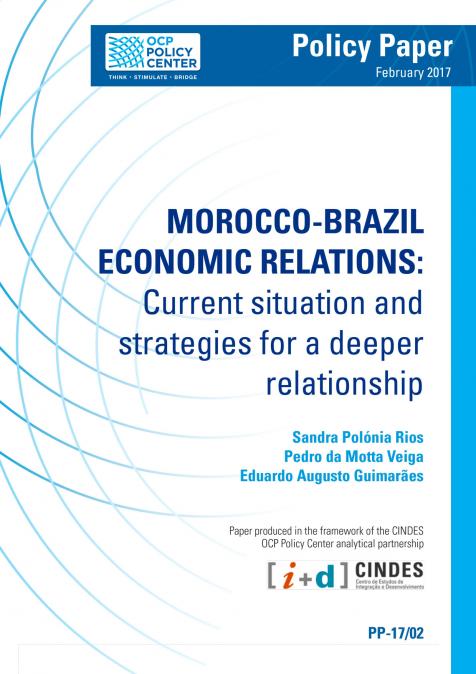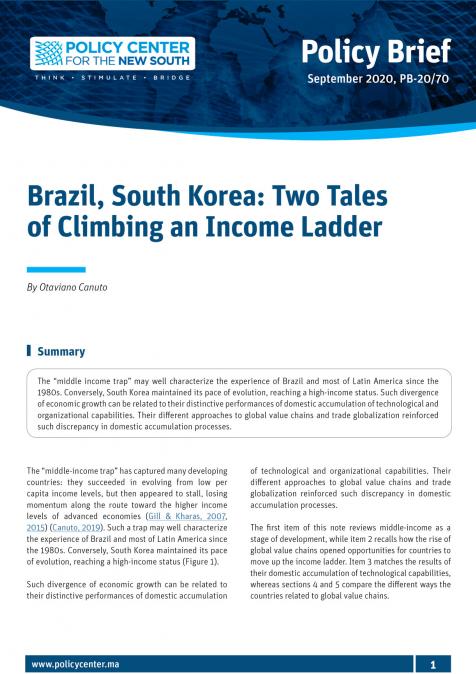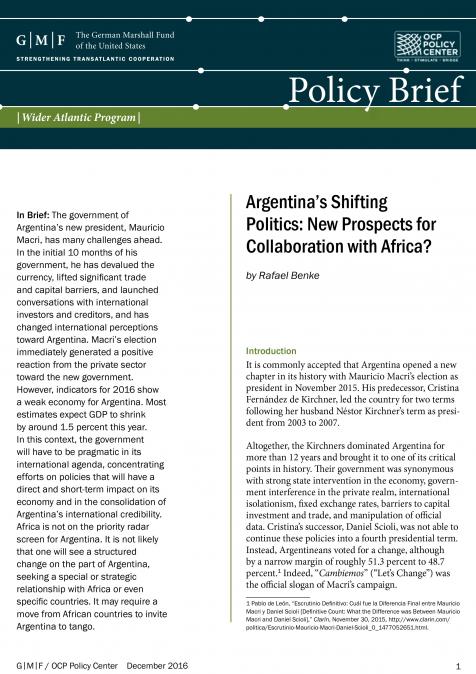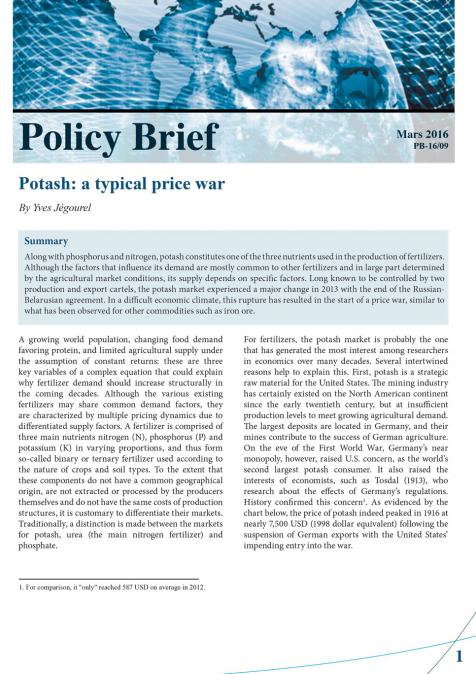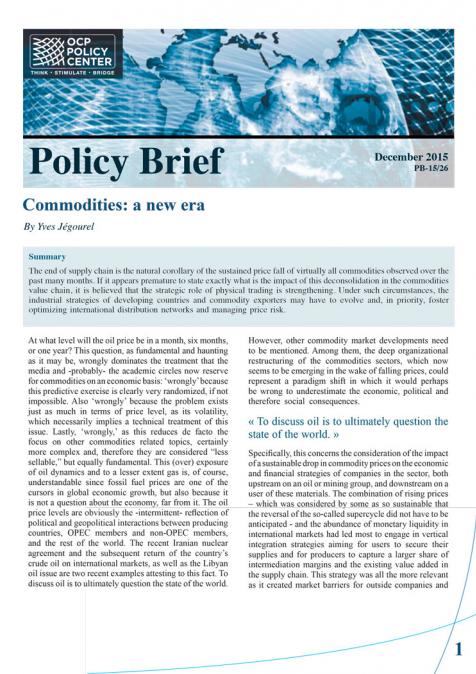Publications /
Policy Paper
Despite the sustained growth in the bilateral trade observed at the beginning of the Century, Moroccan – Brazilian economic relations are still going through what could be called the ‘shallow’ phase of relations between two middle-income countries.
Trade is concentrated in a few products – those where both countries enjoy long lasting and natural comparative advantages – and face strong difficulties to diversify in terms of products and to upgrade towards more complex models of linkages (e.g. value chain model). At the investment level, bilateral flows and stocks are almost irrelevant. Brazil has not been able to seize the opportunities opened by the recent industrial development of Morocco and its diversified set of (industrial) policies and incentives.
Until recently, the management of bilateral economic relations by the governments seems to follow a ‘business as usual’ model, as the timid efforts to initiate a discussion on a trade agreement were left aside in the middle of the previous decade. In the beginning of 2016, both sides began to signalize renewed interest in promoting bilateral economic ties. It seems to be the right moment to deepen the understanding of the existing opportunities and barriers to trade and investment between the two countries.
This study aims to provide technical elements to support a revision of the current state of the art and to devise a strategy to improve and to deepen the bilateral economic relations. Departing from the current situation, this research paper presents a roadmap to improve and to deepen the bilateral economic relations, with a focus on the negotiations of trade and investment agreements.
Section 2 of this paper presents a brief description of the main economic characteristics and indicators of the Brazilian and Moroccan economies, their economic structures, and recent trends. In order to contribute to the understanding of the characteristics of the external economic relations of each country, Section 3 presents a detailed analysis of the trade and foreign investments profiles of both countries. Section 4 describes trade and industrial policies, as well as import tariff policies, preferential trade agreements negotiated by each of them and the FDI policies they have been implementing.
The assessment of bilateral trade profile is developed in Section 5. Some of the indicators calculated in this section show the degree of concentration, intensity, and the complementarity of bilateral trade flows. An analysis of these indicators led to the identification of opportunities to expand bilateral trade. Departing from the findings in this research, section 6 presents some elements that could be included in a roadmap of initiatives to foster bilateral economic relations. Section 7 concludes the paper.

